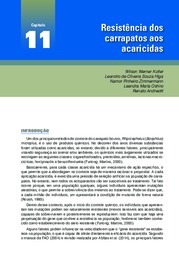Study gathers genomic prediction data on beef cattle to help farmers select tick-resistant animals. By involving different cattle populations, the study enables more accurate predictions about tick resistance. The study covers Angus, Hereford, Brangus and Braford (Brazil); Tropical Composite and Brahman (Australia); and Nguni (South Africa) breeds. Analysis requires far fewer animals in co mparison withper breed and no direct genetic linkages across the populations to make predictions compared to conventional methods. New method can be used to identify animals with other traits of interest. Researchers across several countries have just released genomic prediction information for resistance of different breeds of beef cattle to ticks based on the merger of databases from Brazil, South Africa and Australia. Tick resistance is one of the main problems affecting livestock in countries that produce beef and milk. The scientists are part of the International Tick Consortium, coordinated by the Center for Tropical Livestock Genetics and Health (CTLGH), and which involves countries in Africa, Oceania, Europe and the Americas. The results of this unprecedented work are included in the article “Multiple country and breed genomic prediction of tick resistance in beef cattle”, released last Thursday (23/06), in the international scientific journal Frontiers. According to lead researcher Fernando Flores Cardoso, head of Embrapa Southern Livestock, tick infestation level is a very difficult phenotype to collect in herds in order to assess the animals’ resistance. Thus, combining data from similar experiments in different countries and cattle breeds represents an important advance for genomic selection aimed at improving tick resistance. In the article, the researchers show it is possible to combine information from different cattle populations in a single analysis and therefore generate more accurate predictions of tick resistance. “This allows breeding and genetic improvement to advance, even in populations that have a smaller reference population. We can add other populations and make the database grow even bigger, remembering that the reference population is the database required to start the genomic selection process. They are animals with tick counts and genotyped for thousands of markers throughout the genome”, explains Cardoso. In the study, databases of thousands of Angus, Hereford, Brangus and Braford animals from Brazil that had been phenotyped for tick resistance were combined with smaller numbers of phenotyped Tropical Composite and Brahman cattle from Australia and the Nguni breed from South Africa, to assess the possibility of improving host resistance across all the populations through multiple trait genomic selection. . Professor Ben Hayes, from the University of Queensland, a key researcher in the collaboration, suggested this approach after using it successfully for cross-country assessments of feed efficiency in dairy cattle. The data consisted in tick counts or scores assessing the number of female ticks of at least 4.5 mm in length. All populations were genotyped using medium-density Illumina SNP BeadChips and combined into a common high-density panel of over 300,000 markers. “The results indicate that a joint genomic assessment of Angus, Hereford, Braford, Brangus and Brahman can be readily implemented to improve tick resistance in these populations using selection on genomic breeding values. For Nguni and Tropical Composite, where the numbers of phenotyped animals were small, additional phenotyping will be necessary to obtain more accurate genomic values”, states Cardoso. According to CTLGH Director Professor Appolinaire Djikeng, a co-author of the article based in the Roslin Institute at the University of Edinburgh (Scotland), the study directly contributes to environmental improvement by reducing the use of tick control chemicals. “The results reported in our publication provide a framework to integrate selection for tick resistance into livestock breeding programs. In doing so, it will be increasingly more possible to identify tick-resistant animals to be used by farmers in areas where such parasites are endemic. A significant long-term benefit of this approach is the reduced use and even elimination of acaricides that are widely used to treat animals but have significant adverse effects on public health and on the environment,” he says. Another co-author of the article, Professor Heather Burrow from the University of New England (Australia), highlights that the use of an international and multidisciplinary collaborative approach is essential for the development of solutions to the tick problem and other problems where it is very difficult or expensive to measure resistance of individual livestock. In recent years, the CTLGH has sought practical and cost-effective ways to analyze beef cattle data, using a combination of animal measurements and DNA-based information (genomics) to provide genomic values that farmers could use in their decision-making. “This recently published research undertaken collaboratively by researchers across multiple countries has now shown that it is entirely feasible to combine phenotypic and genomic information from animals across countries to provide genomic breeding values for breeders. In addition, the Consortium has identified several important advantages over traditionally accepted genomic breeding methods for genomic selection approaches, which will make it much simpler and cheaper for cattle breeders to genetically improve cattle tick resistance,” says Burrow. According to the scientist, this new study demonstrates that by using complete genomic information in conjunction with animal measurements, it is necessary to measure significantly fewer animals than in traditional approaches and in herds that are not genetically related. This is a major step forward for livestock breeders. “This research actually used cattle of several completely unrelated breeds in Brazil, Australia and South Africa and used far fewer animals than required by traditional breeding approaches, which typically analyze between 1,000 and 5,000 head to reliably predict animal performance. In addition, the new research has shown that, even with minor variations in the way tick infestation is measured in cattle, predictions for resistance to the parasite also work if the data are analyzed in conjunction with complete genomic information,” explains the Australian researcher. According to her, these findings not only demonstrate the viability of the consortium's approach to find solutions that are practical and cost-effective for cattle farmers, but also represent genuine scientific advances that can be applied in the future not only to tick resistance in cattle, but also to other problems. According to Dr Ntanganedzeni Mapholi at UNISA, the results and the approach reported in the publication offer real options for us in South Africa to build on our previous efforts to tackle the ticks challenge through genetic improvement. Tick causes billion-dollar losses About 80% of the world's beef and dairy cattle are affected by ticks or tick-borne diseases that cause significant production losses. In 2016, these losses were estimated at between US$20 billion and US$30 billion. In addition to the production losses and direct damage caused by the parasite to the animal, such as anemia, stress and lesions on the leather, ticks can increase the frequency of screw-worms (myiasis) by up to four times. The tick is also the vector of the pathogens responsible for babesiosis and anaplasmosis, diseases that characterize the Cattle Tick Fever complex. Thus, the loss in beef and milk production and the devaluation of leather are added to other losses ranging from spending on emergency control measures to lower reproductive performance and even animal deaths Genomic selection Genomic selection for host resistance to ticks is the most efficient factor to control parasites, representing a permanent, low-cost solution that does not require extra labor or resources and does not cause additional costs for beef and dairy production. At Embrapa, since 2010, a multidisciplinary team led by the researcher Fernando Flores Cardoso has been working on the topic, aiming to increase the resistance of cattle to the most prevalent health problems related to the parasite. Cardoso recently led the project Genetic tools to increase resistance to ticks, Cattle Tick Fever agents, Keratoconjunctivitis and Ocular Carcinoma in beef cattle. One of the main results of this research was the establishment of a database of animals of the Hereford, Braford, Angus and Brangus breeds with thousands of cattle that have genotyping data for 50,000 genetic markers and phenotypic data for tick resistance, production traits - such as weight gain -, adaptability traits, eye pigmentation, coat length and navel size. This database, the largest in the world on tick resistance, constitutes a Reference Population for the development of genomic predictions.
-
Study gathers genomic prediction data on beef cattle to help farmers select tick-resistant animals. -
By involving different cattle populations, the study enables more accurate predictions about tick resistance. -
The study covers Angus, Hereford, Brangus and Braford (Brazil); Tropical Composite and Brahman (Australia); and Nguni (South Africa) breeds. -
Analysis requires far fewer animals in co mparison withper breed and no direct genetic linkages across the populations to make predictions compared to conventional methods. -
New method can be used to identify animals with other traits of interest. |
Researchers across several countries have just released genomic prediction information for resistance of different breeds of beef cattle to ticks based on the merger of databases from Brazil, South Africa and Australia. Tick resistance is one of the main problems affecting livestock in countries that produce beef and milk. The scientists are part of the International Tick Consortium, coordinated by the Center for Tropical Livestock Genetics and Health (CTLGH), and which involves countries in Africa, Oceania, Europe and the Americas.
The results of this unprecedented work are included in the article “Multiple country and breed genomic prediction of tick resistance in beef cattle”, released last Thursday (23/06), in the international scientific journal Frontiers. According to lead researcher Fernando Flores Cardoso, head of Embrapa Southern Livestock, tick infestation level is a very difficult phenotype to collect in herds in order to assess the animals’ resistance. Thus, combining data from similar experiments in different countries and cattle breeds represents an important advance for genomic selection aimed at improving tick resistance.
In the article, the researchers show it is possible to combine information from different cattle populations in a single analysis and therefore generate more accurate predictions of tick resistance. “This allows breeding and genetic improvement to advance, even in populations that have a smaller reference population. We can add other populations and make the database grow even bigger, remembering that the reference population is the database required to start the genomic selection process. They are animals with tick counts and genotyped for thousands of markers throughout the genome”, explains Cardoso.
 In the study, databases of thousands of Angus, Hereford, Brangus and Braford animals from Brazil that had been phenotyped for tick resistance were combined with smaller numbers of phenotyped Tropical Composite and Brahman cattle from Australia and the Nguni breed from South Africa, to assess the possibility of improving host resistance across all the populations through multiple trait genomic selection. .
In the study, databases of thousands of Angus, Hereford, Brangus and Braford animals from Brazil that had been phenotyped for tick resistance were combined with smaller numbers of phenotyped Tropical Composite and Brahman cattle from Australia and the Nguni breed from South Africa, to assess the possibility of improving host resistance across all the populations through multiple trait genomic selection. .
Professor Ben Hayes, from the University of Queensland, a key researcher in the collaboration, suggested this approach after using it successfully for cross-country assessments of feed efficiency in dairy cattle.
The data consisted in tick counts or scores assessing the number of female ticks of at least 4.5 mm in length. All populations were genotyped using medium-density Illumina SNP BeadChips and combined into a common high-density panel of over 300,000 markers. “The results indicate that a joint genomic assessment of Angus, Hereford, Braford, Brangus and Brahman can be readily implemented to improve tick resistance in these populations using selection on genomic breeding values. For Nguni and Tropical Composite, where the numbers of phenotyped animals were small, additional phenotyping will be necessary to obtain more accurate genomic values”, states Cardoso.
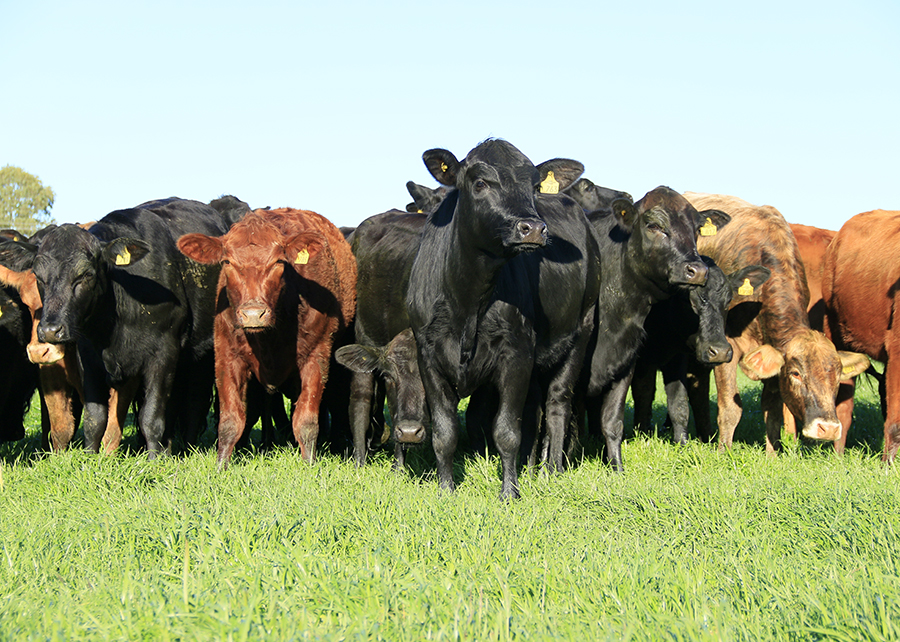
According to CTLGH Director Professor Appolinaire Djikeng, a co-author of the article based in the Roslin Institute at the University of Edinburgh (Scotland), the study directly contributes to environmental improvement by reducing the use of tick control chemicals. “The results reported in our publication provide a framework to integrate selection for tick resistance into livestock breeding programs. In doing so, it will be increasingly more possible to identify tick-resistant animals to be used by farmers in areas where such parasites are endemic. A significant long-term benefit of this approach is the reduced use and even elimination of acaricides that are widely used to treat animals but have significant adverse effects on public health and on the environment,” he says.
Another co-author of the article, Professor Heather Burrow from the University of New England (Australia), highlights that the use of an international and multidisciplinary collaborative approach is essential for the development of solutions to the tick problem and other problems where it is very difficult or expensive to measure resistance of individual livestock. In recent years, the CTLGH has sought practical and cost-effective ways to analyze beef cattle data, using a combination of animal measurements and DNA-based information (genomics) to provide genomic values that farmers could use in their decision-making.
 “This recently published research undertaken collaboratively by researchers across multiple countries has now shown that it is entirely feasible to combine phenotypic and genomic information from animals across countries to provide genomic breeding values for breeders. In addition, the Consortium has identified several important advantages over traditionally accepted genomic breeding methods for genomic selection approaches, which will make it much simpler and cheaper for cattle breeders to genetically improve cattle tick resistance,” says Burrow.
“This recently published research undertaken collaboratively by researchers across multiple countries has now shown that it is entirely feasible to combine phenotypic and genomic information from animals across countries to provide genomic breeding values for breeders. In addition, the Consortium has identified several important advantages over traditionally accepted genomic breeding methods for genomic selection approaches, which will make it much simpler and cheaper for cattle breeders to genetically improve cattle tick resistance,” says Burrow.
According to the scientist, this new study demonstrates that by using complete genomic information in conjunction with animal measurements, it is necessary to measure significantly fewer animals than in traditional approaches and in herds that are not genetically related. This is a major step forward for livestock breeders.
“This research actually used cattle of several completely unrelated breeds in Brazil, Australia and South Africa and used far fewer animals than required by traditional breeding approaches, which typically analyze between 1,000 and 5,000 head to reliably predict animal performance. In addition, the new research has shown that, even with minor variations in the way tick infestation is measured in cattle, predictions for resistance to the parasite also work if the data are analyzed in conjunction with complete genomic information,” explains the Australian researcher.
According to her, these findings not only demonstrate the viability of the consortium's approach to find solutions that are practical and cost-effective for cattle farmers, but also represent genuine scientific advances that can be applied in the future not only to tick resistance in cattle, but also to other problems.
According to Dr Ntanganedzeni Mapholi at UNISA, the results and the approach reported in the publication offer real options for us in South Africa to build on our previous efforts to tackle the ticks challenge through genetic improvement.
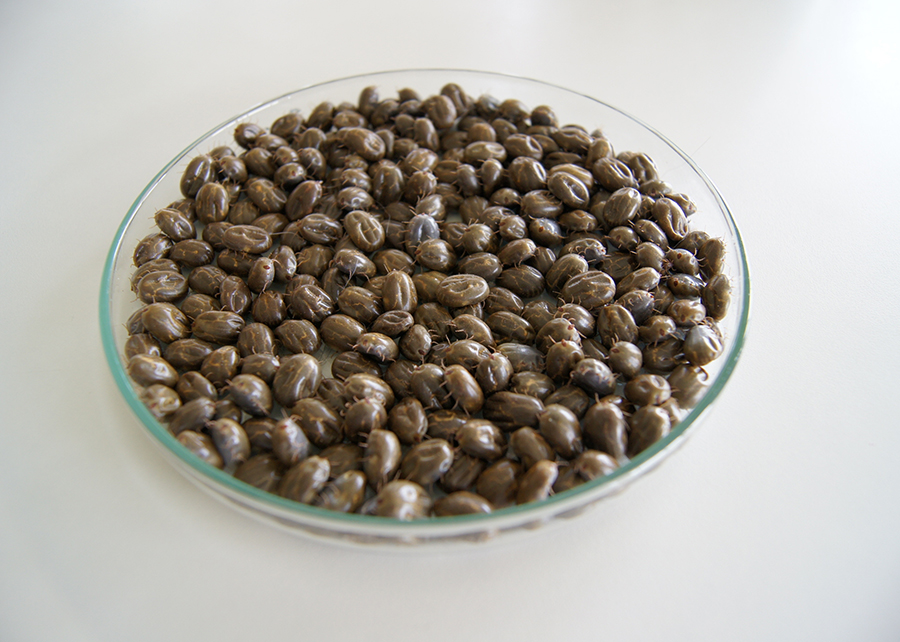 Tick causes billion-dollar losses Tick causes billion-dollar losses
About 80% of the world's beef and dairy cattle are affected by ticks or tick-borne diseases that cause significant production losses. In 2016, these losses were estimated at between US$20 billion and US$30 billion. In addition to the production losses and direct damage caused by the parasite to the animal, such as anemia, stress and lesions on the leather, ticks can increase the frequency of screw-worms (myiasis) by up to four times. The tick is also the vector of the pathogens responsible for babesiosis and anaplasmosis, diseases that characterize the Cattle Tick Fever complex. Thus, the loss in beef and milk production and the devaluation of leather are added to other losses ranging from spending on emergency control measures to lower reproductive performance and even animal deaths |
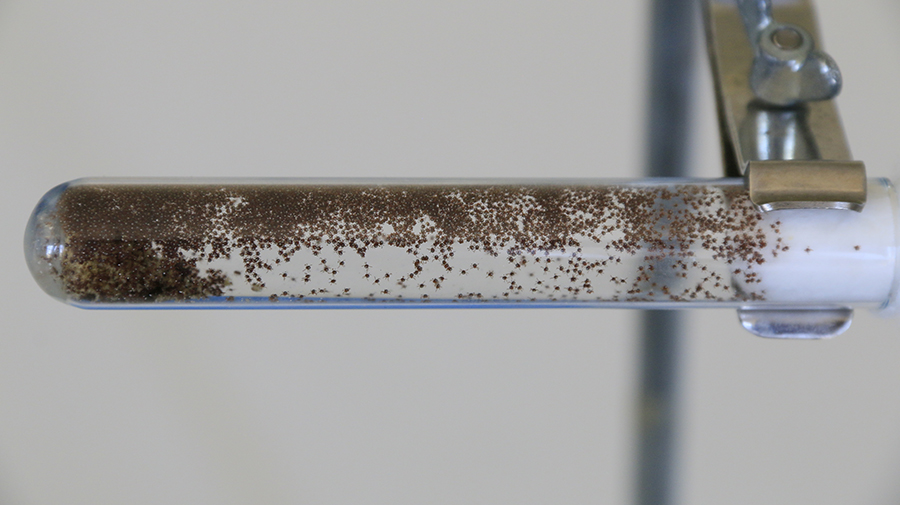 Genomic selection
Genomic selection
Genomic selection for host resistance to ticks is the most efficient factor to control parasites, representing a permanent, low-cost solution that does not require extra labor or resources and does not cause additional costs for beef and dairy production.
At Embrapa, since 2010, a multidisciplinary team led by the researcher Fernando Flores Cardoso has been working on the topic, aiming to increase the resistance of cattle to the most prevalent health problems related to the parasite. Cardoso recently led the project Genetic tools to increase resistance to ticks, Cattle Tick Fever agents, Keratoconjunctivitis and Ocular Carcinoma in beef cattle.
 One of the main results of this research was the establishment of a database of animals of the Hereford, Braford, Angus and Brangus breeds with thousands of cattle that have genotyping data for 50,000 genetic markers and phenotypic data for tick resistance, production traits - such as weight gain -, adaptability traits, eye pigmentation, coat length and navel size. This database, the largest in the world on tick resistance, constitutes a Reference Population for the development of genomic predictions.
One of the main results of this research was the establishment of a database of animals of the Hereford, Braford, Angus and Brangus breeds with thousands of cattle that have genotyping data for 50,000 genetic markers and phenotypic data for tick resistance, production traits - such as weight gain -, adaptability traits, eye pigmentation, coat length and navel size. This database, the largest in the world on tick resistance, constitutes a Reference Population for the development of genomic predictions.
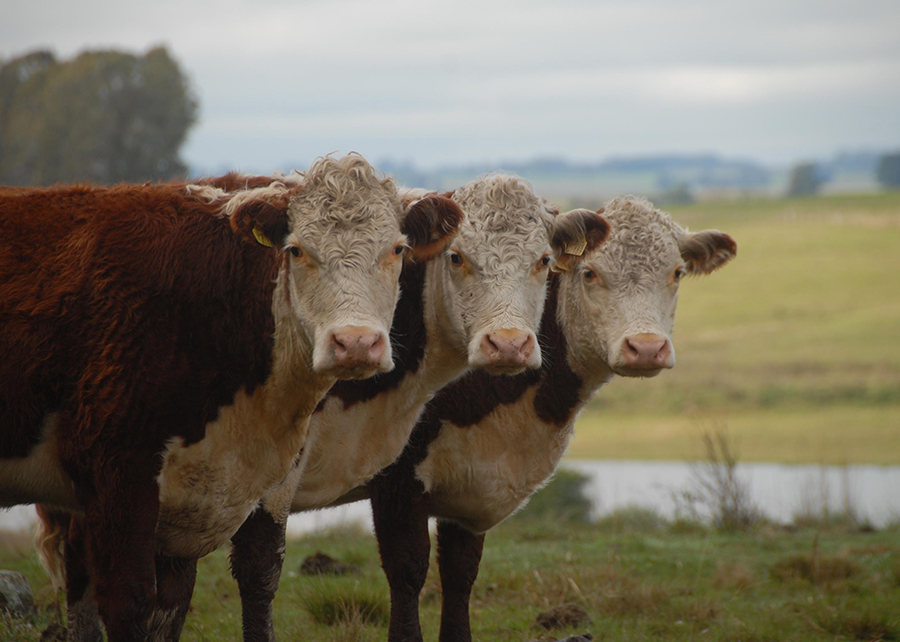
In the study, databases of thousands of Angus, Hereford, Brangus and Braford animals from Brazil that had been phenotyped for tick resistance were combined with smaller numbers of phenotyped Tropical Composite and Brahman cattle from Australia and the Nguni breed from South Africa, to assess the possibility of improving host resistance across all the populations through multiple trait genomic selection. .
“This recently published research undertaken collaboratively by researchers across multiple countries has now shown that it is entirely feasible to combine phenotypic and genomic information from animals across countries to provide genomic breeding values for breeders. In addition, the Consortium has identified several important advantages over traditionally accepted genomic breeding methods for genomic selection approaches, which will make it much simpler and cheaper for cattle breeders to genetically improve cattle tick resistance,” says Burrow.
 Genomic selection
Genomic selectionOne of the main results of this research was the establishment of a database of animals of the Hereford, Braford, Angus and Brangus breeds with thousands of cattle that have genotyping data for 50,000 genetic markers and phenotypic data for tick resistance, production traits - such as weight gain -, adaptability traits, eye pigmentation, coat length and navel size. This database, the largest in the world on tick resistance, constitutes a Reference Population for the development of genomic predictions.

